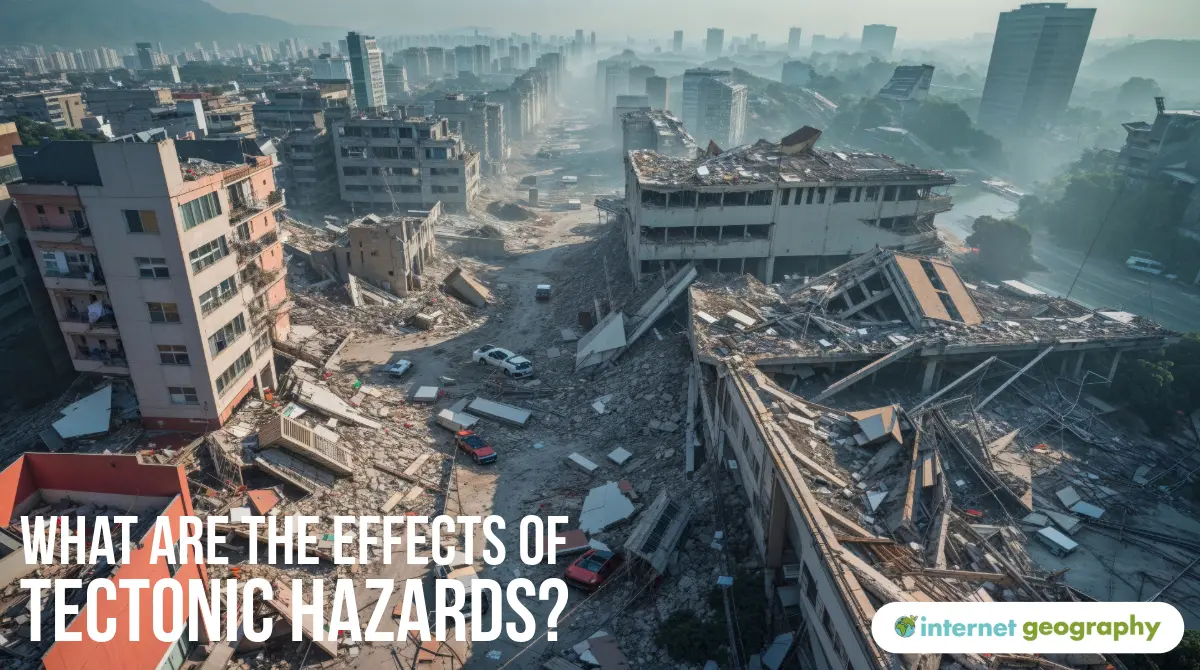What are the effects of tectonic hazards?
Tectonic hazards such as earthquakes and volcanic eruptions can have devastating impacts. These impacts are usually grouped into two types:
- Primary effects – the immediate impacts that happen during the hazard.
- Secondary effects – the longer-term impacts that happen in the hours, days, or weeks after the event.
Primary Effects of Earthquakes
These are the direct results of the ground shaking:
- People are killed or injured by collapsing buildings and falling debris.
- Homes, schools, hospitals, and other buildings are destroyed.
- Roads, bridges, railways, and ports are damaged or made unusable.
- Water pipes, gas mains, and electricity cables are broken, cutting off essential services.
Secondary Effects of Earthquakes
These are caused by the disruption triggered by the initial shock:
- Rescue and emergency services may be delayed due to blocked roads and damaged infrastructure.
- Fires break out from ruptured gas pipes or fallen power cables.
- Burst water pipes lead to shortages of clean water, increasing the risk of disease.
- Economic activity is disrupted, with businesses closed and repair costs putting strain on the government and families.
Primary Effects of Volcanic Eruptions
These result from the eruption itself:
- Lava flows, ash, and pyroclastic flows destroy buildings, roads, and farmland
- People and animals are killed or injured by hot gases, ash, or debris.
- Air travel is disrupted or cancelled due to ash clouds in the atmosphere.
- Ash and gases contaminate water supplies.
Secondary Effects of Volcanic Eruptions
These occur as a result of the aftermath:
- Access to remote areas may be cut off, slowing down aid and rescue efforts.
- Glaciers and snow on volcanoes melt, causing floods.
- Heavy rain can mix with ash to create lahars (volcanic mudflows) that bury settlements.
- Tourism may increase as visitors are drawn to see the volcano and its impacts.
- In the long term, volcanic ash can enrich soils, making land more fertile for farming.

